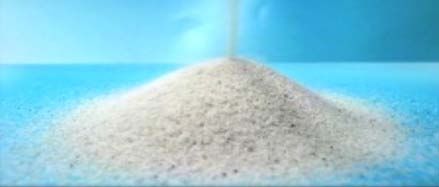July 13, 2012
Kobe City to Recover Sewage Phosphorus for Fertilizer
Keywords: Environmental Technology Local government Manufacturing industry Reduce / Reuse / Recycle

Copyright Kobe City, Swing Corporation
Kobe, a major city in central Japan, announced on March 30, 2012, that its project to recover phosphorus for use in fertilizer was awarded a grant by the Japanese government for its 2012 Breakthrough by Dynamic Approach in Sewage High Technology Project (B-DASH). Japan's Ministry of Land, Infrastructure, Transport and Tourism is sponsoring the B-DASH Project to promote development of innovative technologies in wastewater treatment. Dubbed the "Kobe Harvest Project," the project in Kobe is a collaboration between Kobe City; water treatment and environmental engineering specialist Swing Corporation, and fertilizer company Mitsubishi Shoji Agri-Service Corporation.
The project, scheduled to start at the Higashinada Plant in Kobe in January 2013, aims to demonstrate a technology that can effectively recover sewage phosphate from municipal wastewater for reuse in agricultural fertilizer. The technology under development uses magnesium to easily separate phosphorus from digested sludge.
In some of Japan's enclosed bodies of water such as Osaka Bay and the Seto Inland Sea, phosphates cause harmful algal blooms, or "red tides." These phosphates need to be removed from sewage effluent to prevent the degradation of water quality associated with red tides. Meanwhile, while many Japanese farmers use phosphate for fertilizer in Japan, they are entirely dependent on imports as their source.
With global concern growing over the depletion of phosphate deposits, Kobe hopes to find an effective way to recover phosphate from wastewater and use it as a high-quality fertilizer.
Posted: 2012/07/13 06:00:15 AM
Related
"JFS Newsletter"
- 'Good Companies in Japan' (Article No.3): Seeking Ways to Develop Societal Contribution along with Core Businesses
- "We Sell Services, Not Products": Using LCA to Measure the Environmental Benefits of Nihonkai Gas's Heater Rentals
- Learning from Pollution Experience, Kitakyushu Now Promotes Sustainable Society in Asia
- Selling Services, Not Products: 15 years of Efforts and Achievements by Nihonkai Gas
- Making Olympic Gold Medals from 'Urban Mine' Sources
Related
"Popular Articles"
- Quality Fertilizer Developed from Rice Husk Ashes
- Revised Law Requires Recycling of Additional Home Appliances
- Used Bottle Caps Funding Polio Vaccines for World's Children
- No More Plastics Bags: McDonald's Promotes Simpler Packaging
- New METI/MOE Policy Promotes Recycling of Small Electrical and Electronic Equipment Waste


